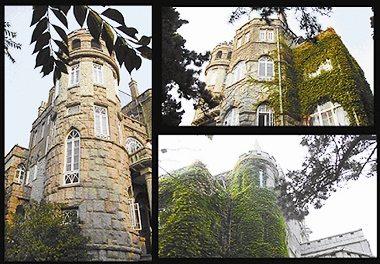
BADAGUAN, or the Eight Passes, in Qingdao has been listed by the National Geography magazine of China as one of the five most scenic city districts in China.
Lying between Huiquan Cape and Taiping Cape, the Eight Passes faces Taiping Bay to the south and the sands of No. 3 Bathing Beach to the east. The area, which is a collection of 200 large villas built in foreign architectural styles, emerged when Qingdao was part of the German Concession in 1898.
The architectural styles of most European countries are represented here, as well as those of North America, Japan and Russia, prompting the Eight Passes’ nickname “The Architectural Museum of a Hundred Nations.”
The Eight Passes was originally conceived as a spa, sanitorium, or kurbad (health and curative spa in German). Having discovered that Qingdao had an excellent temperate climate, conducive to rest and recuperation, colonial era Germany, like many old European countries with a long-established spa tradition, decided to create a spa, or sanitorium, in Qingdao. Architects from all over the world were invited to create a villa that would reflect the style of their respective countries.
This explains the Austrian, British, Canadian, Danish, Dutch, French, German, Greek, Italian, Japanese, Swiss and Russian-style villas, to name some of the more prominent, represented at the Eight Passes. The name refers to the eight strategic ancient routes — each with a strategic gate, or pass — that provide access through the Great Wall of China.
Criss-crossing the scenic area are 10 roads built in 1931 and lined with many varieties of trees including crabapples, pine trees and ginkgo.
Another distinctive feature of the Eight Passes is that most of the passes have their own specific aboreal theme — each avenue has its own distinct species of tree, although three of the passes share the same tree species.
In addition, certain avenues during the blossoming season are more known for their type of flowers (eg., purple violets are synonymous with Ningwuguan Pass) or shrubs. In fact, there are so many flowers adorning the avenues of the Eight Passes that the area is commonly known by locals as Hua Jie, which means “a place of flowers.”
The latest expansion in the Eight Passes is a peach orchard in the northeastern corner between Xianggang Road West and Zhongshan Park, and a cypress grove in the corresponding southwestern corner. The peach orchard is a pleasant place to take a stroll in the spring and is a favorite of young couples.
(Jane Lai, Lin Jing)
|

